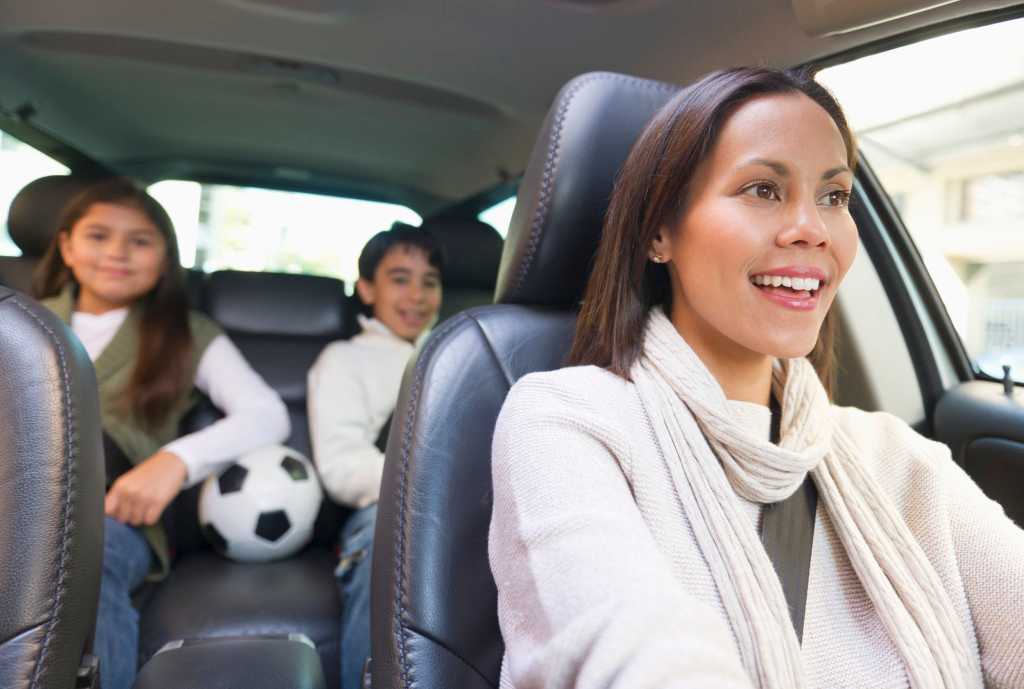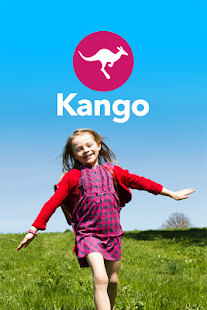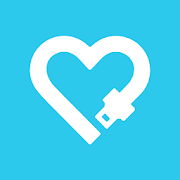3 comments

Ridesharing has become synonymous with transportation over the past decade. A majority of the US population has enjoyed the services Uber & Lyft provide. From driving people to work, to the airport and occasionally picking up inebriated passengers, I have seen and done it all when it comes to rideshare. However, there is one aspect of driving for Uber/Lyft I don’t like and that is the passengers ability to order a ride for a minor. As per Uber & Lyft TOS (Terms of Service), a driver is not supposed to pick up a minor (under the age of 18) without an adult accompanying them during the ride. Both Uber and Lyft have their own set of rules about transporting unaccompanied minors, but they both explicitly don’t allow users under the age of 18 to setup an account or use their services without an adult present.
Unfortunately, in the real world, rules are meant to be broken and the driver is faced with a very difficult decision to be made on the spot. I definitely had my share of rides requested by minors or their parents, trusting their kids to be driven by a total stranger who shows up in front of their house. Whatever happened to the advice I used to get from my mother? “Don't get in a car with a stranger.” I guess, in this day and age of smartphones, apps for every need and service, parents are more trusting of the system that currently exists. I personally will not give a ride to anyone I suspect being under the age of 18, yes, I may be losing revenue after driving to the pick-up spot but it definitely is not worth the risk since Uber and Lyft liability insurance coverage is deemed invalid if an accident were to occur.
“A rider must be at least 18 years of age to have an Uber account and request rides. Anyone under 18 must be accompanied by someone 18 years of age or older on any ride.” “As a driver-partner, you should decline the ride request if you believe the person requesting the ride is under 18. When picking up riders, if you feel they are underage, you may request they provide a driver’s license or ID card for confirmation. If a rider is underage, please do not start the trip or allow them to ride.”
“Unaccompanied minors are prohibited from traveling with most carriers, including TNCs. A passenger must be 18 to sign up for a Lyft account, but if a driver believes a passenger might be underage, the driver may ask the passenger to confirm their age.” “The driver may also let a passenger know that the driver will have to cancel the trip if the passenger is indeed under 18. In addition, drivers can report requests to transport unaccompanied minors to Lyft”
One aspect of ridesharing that is gaining more popularity these days by users and drivers is rideshare services for kids. The five companies mentioned in this article carry special insurance that allows drivers to transport kids, and they all put their drivers through rigorous background checks to ensure their drivers are safe and can handle driving kids around.
As a rideshare driver, do the following apps sound like better paying gigs that are worth the time, hassle of a rigorous vetting process? That has to be your own determination, with rates being slashed by Uber and Lyft what seems to be on a monthly basis, rideshare driving is becoming a difficult and a mostly unprofitable gig. Would you be happy driving children around without the supervision of their parents? Personally, my answer would be “Absolutely” since I have kids of my own. If you truly enjoy kids of all ages, you’re off to the right start with driving for one of the following services.
According to the estimated pay displayed on their websites, I’d say these are a good deal when compared to the regular rideshare services. If a driver can get up to $30 gross per app on hour, I say where do I sign up! One thing you’ll want to take into consideration, however, is if their pay structure includes reimbursement for mileage. If it does, that’s one less thing you’re able to deduct at the end of the year when filing your taxes, which may throw them off. I bank on the fact that Uber and Lyft don’t reimburse me for mileage so I can write them off as a deduction at the end of the year. But, if that’s not something you’re worried about or interested in, being reimbursed up front for your mileage could be a great option for more cash in your pocket.
As far as flexibility and freedom goes, this seems to be more ideally suited to someone looking to do it part time with the idea that most of these kids would need rides first thing in the morning, then assuming things would slow down during the school day, and pick back up again from around 2:30pm and on. Some of these services offer babysitting jobs in addition to rideshare, that may increase your hourly rates however the downside of that could be day long endeavors based on the age of the child or how late the parents work into the evenings.
Also, as a driver, some of the messiest passengers I have had in my car were kids and that’s when the parents were in the vehicle with them! That’s one reason why driving for these companies might not be a great idea for the everyday Uber and Lyft driver. There’s a reason why these companies only hire people who have experience with kids. They want drivers and sitters who know what they are getting themselves into. If you’re considering driving for any of the following companies, the biggest difference I found among all of them was how they handle the car seat/booster seat situation. As a driver, I don’t want to take on the added expense of buying a car seat/booster seat, so I would likely lean toward one that covers that cost.
Basically, it’s up to you to decide if you have the patience for this type of service and if you feel like the approximate $30 gross per app on hour is enough to make up for any hassles you feel this service might bring up in comparison to driving around adults. Driving for these services is definitely not for everyone, but could be a great deal for the right candidate.
I clearly understand why many parents would jump at the chance to use apps like the following. It would be a huge weight off their shoulders to be able to ensure their kids get where they need to go safely without interrupting their busy days at work. With the added levels of background checks, fingerprinting and vetting process built into these systems, they also offer a certain peace of mind that’s needed when children are involved.
All in all, it seems like these apps are the real deal for both the drivers and the customers. They have proliferated rapidly, some have already shut down and others have changed their business models, a consolidation may be in order to solidify their spots. With the added certifications and insurance these apps have, they are protecting themselves against the reasons why Uber and Lyft don’t allow unaccompanied minors and by doing so are providing a service that fills a gap.
 Launched in 2012 as strictly a carpool service that paired parents up with each other, Kango was converted into a rideshare app for kids in 2015. Today it operates mainly around San Francisco and in parts of Los Angeles. Initially, they do a standard background check on their perspective drivers, but there’s one important additional step they take that has been proven to significantly increase the accuracy of those background checks. They fingerprint each of their drivers, his is something Uber and Lyft have always adamantly opposed to doing. For drivers who pass the initial checks along with meeting several other requirements, they then move onto the next step. That next step includes another background check that looks back 18 years as well as fingerprinting and a check through a child abuse registry. They also require drivers to pass an in person interview as well as attend an in person training program. They will immediately remove any drivers who use a mobile device for texting or talking while they have children in the car. Like most of the other kids rideshare services, they require several years of childcare experience. Kango also now is offering babysitting services as well as rideshare. They also promise drivers that they will make up to $35 an hour, whether this is before or after they take their commission is unclear. But either way, this is far better pay than Uber and Lyft offer. It also means higher prices for parents. But those higher prices pay for better trained and more qualified drivers for your kids and a piece of mind.
Launched in 2012 as strictly a carpool service that paired parents up with each other, Kango was converted into a rideshare app for kids in 2015. Today it operates mainly around San Francisco and in parts of Los Angeles. Initially, they do a standard background check on their perspective drivers, but there’s one important additional step they take that has been proven to significantly increase the accuracy of those background checks. They fingerprint each of their drivers, his is something Uber and Lyft have always adamantly opposed to doing. For drivers who pass the initial checks along with meeting several other requirements, they then move onto the next step. That next step includes another background check that looks back 18 years as well as fingerprinting and a check through a child abuse registry. They also require drivers to pass an in person interview as well as attend an in person training program. They will immediately remove any drivers who use a mobile device for texting or talking while they have children in the car. Like most of the other kids rideshare services, they require several years of childcare experience. Kango also now is offering babysitting services as well as rideshare. They also promise drivers that they will make up to $35 an hour, whether this is before or after they take their commission is unclear. But either way, this is far better pay than Uber and Lyft offer. It also means higher prices for parents. But those higher prices pay for better trained and more qualified drivers for your kids and a piece of mind.
 According to their website, Zum is on a mission to build the world’s largest and most trusted platform for transportation and care for children. Which probably sums up the aspirations of all these newly formed kids rideshare companies. Which one will actually achieve that goal remains unknown, but Zūm, like the others, is making a great effort. Also like the others, they have a vigorous vetting system for drivers. Drivers are required to go through several steps in the application process. First, they fill out an application online. If that meet’s Zūm’s exacting standards, Zūm will call them the same day to setup an online meeting. If they pass the online interview, they will move on to an in person interview at one of Zūm’s local offices. In addition to passing the standard criminal and driving record background checks, Zūm drivers must be certified by TrustLine, which is a database of nannies and babysitters that have cleared criminal background checks in California, which is where Zūm operates. They are also checked to ensure they don’t show up in any sex offender records. Zūm’s background checks far exceeds anything provided by Uber or Lyft. Zūm, which started in California has branched out Arizona, Texas, Illinois and Florida.
According to their website, Zum is on a mission to build the world’s largest and most trusted platform for transportation and care for children. Which probably sums up the aspirations of all these newly formed kids rideshare companies. Which one will actually achieve that goal remains unknown, but Zūm, like the others, is making a great effort. Also like the others, they have a vigorous vetting system for drivers. Drivers are required to go through several steps in the application process. First, they fill out an application online. If that meet’s Zūm’s exacting standards, Zūm will call them the same day to setup an online meeting. If they pass the online interview, they will move on to an in person interview at one of Zūm’s local offices. In addition to passing the standard criminal and driving record background checks, Zūm drivers must be certified by TrustLine, which is a database of nannies and babysitters that have cleared criminal background checks in California, which is where Zūm operates. They are also checked to ensure they don’t show up in any sex offender records. Zūm’s background checks far exceeds anything provided by Uber or Lyft. Zūm, which started in California has branched out Arizona, Texas, Illinois and Florida.
 This company operates in northern and southern California, Colorado’s Front Range and the Washington DC/Virginia area. And like the others, they have a thorough and tough vetting system for drivers. Rides with these specialty rideshare companies can be quite expensive, especially if you’re a parent with more than one kid and use them more than once a week. With that in mind, HopSkipDrive has come up with a less-expensive carpool option. A parent can set up a carpool with up to four families. If the ride is shared with one other family, they can save up to 60% off their normal rates. HopSkipDrive’s rates aren’t much higher than Uber and Lyft for a single family rides, but there is an $18 minimum per ride. With four families, the minimum charge is lowered to just $7 per family. HopSkipDrive, like some of the other services, also lets parents pre-schedule rides up to eight hours in advance. They can also schedule recurring rides.
This company operates in northern and southern California, Colorado’s Front Range and the Washington DC/Virginia area. And like the others, they have a thorough and tough vetting system for drivers. Rides with these specialty rideshare companies can be quite expensive, especially if you’re a parent with more than one kid and use them more than once a week. With that in mind, HopSkipDrive has come up with a less-expensive carpool option. A parent can set up a carpool with up to four families. If the ride is shared with one other family, they can save up to 60% off their normal rates. HopSkipDrive’s rates aren’t much higher than Uber and Lyft for a single family rides, but there is an $18 minimum per ride. With four families, the minimum charge is lowered to just $7 per family. HopSkipDrive, like some of the other services, also lets parents pre-schedule rides up to eight hours in advance. They can also schedule recurring rides.
 Autter is another kid’s rideshare company founded by mothers. While most of the kid’s rideshare companies are based on the West Coast, such as California, Arizona and Colorado, Autter is based in the East Coast in Atlanta, to be exact. Autter’s rates are a very reasonable $1 per mile and $0.50 per minute. Parents can also buy multiple rides for a discount. They have a vetting process for their drivers, which includes only the standard background checks. Their process seems to be looser than the other companies mentioned above such as an in person interview. They don’t say anything about this on their website either. If they are doing so, I suggest that they might consider putting those details on their site, which honestly makes their driver vetting process a little mysterious and therefore questionable.
Autter is another kid’s rideshare company founded by mothers. While most of the kid’s rideshare companies are based on the West Coast, such as California, Arizona and Colorado, Autter is based in the East Coast in Atlanta, to be exact. Autter’s rates are a very reasonable $1 per mile and $0.50 per minute. Parents can also buy multiple rides for a discount. They have a vetting process for their drivers, which includes only the standard background checks. Their process seems to be looser than the other companies mentioned above such as an in person interview. They don’t say anything about this on their website either. If they are doing so, I suggest that they might consider putting those details on their site, which honestly makes their driver vetting process a little mysterious and therefore questionable.
 They have taken on the peer-to-peer model that Kango dropped in 2015. Instead of pairing parents up with staff drivers, their app pairs them up with other parents whose kids are going to and from the same events and locations. For instance, a child is going from school to soccer practice. You enter the school name and team name. By integrating SportsEngine and TeamSnap, the needed details such as times and locations will usually be filled in automatically. The service can be setup to automatically sync with your calendar as well as to add notifications and reminders. Members of any given carpool can send messages and reminders to other members. And a soon to come feature will allow parents to see the exact location of the car during the trip. There are no paid drivers and no charges for the trips as the trips are provided by other parents. The app could help facilitate parents in connecting with other parents they already know and trust whose kids are going to and from the same events. But it seems parents could already do this on their own through text messaging or email if they only want to carpool with other parents they already know. Otherwise, the app could be used to pair up with parents they don’t know. In that case, those parents are not vetted in any way by goKid, and that could prove worse than using poorly vetted Uber and Lyft drivers. The only charge for goKid is for the use of the app itself. Users can pay either a flat fee of $4.99 per month or $49.99 per year, however there is also a free version that has all the basic components necessary.
They have taken on the peer-to-peer model that Kango dropped in 2015. Instead of pairing parents up with staff drivers, their app pairs them up with other parents whose kids are going to and from the same events and locations. For instance, a child is going from school to soccer practice. You enter the school name and team name. By integrating SportsEngine and TeamSnap, the needed details such as times and locations will usually be filled in automatically. The service can be setup to automatically sync with your calendar as well as to add notifications and reminders. Members of any given carpool can send messages and reminders to other members. And a soon to come feature will allow parents to see the exact location of the car during the trip. There are no paid drivers and no charges for the trips as the trips are provided by other parents. The app could help facilitate parents in connecting with other parents they already know and trust whose kids are going to and from the same events. But it seems parents could already do this on their own through text messaging or email if they only want to carpool with other parents they already know. Otherwise, the app could be used to pair up with parents they don’t know. In that case, those parents are not vetted in any way by goKid, and that could prove worse than using poorly vetted Uber and Lyft drivers. The only charge for goKid is for the use of the app itself. Users can pay either a flat fee of $4.99 per month or $49.99 per year, however there is also a free version that has all the basic components necessary.
For a complete list of child rideshare companies you can sign up to drive for check out this article here.
Comments
Drift Hunters . Players enjoy the thrill of drifting. It's a leisure activity used during free time.
While perusing your content on this website, I found it to be highly informative! Please continue to share valuable insights.
Vexanshop